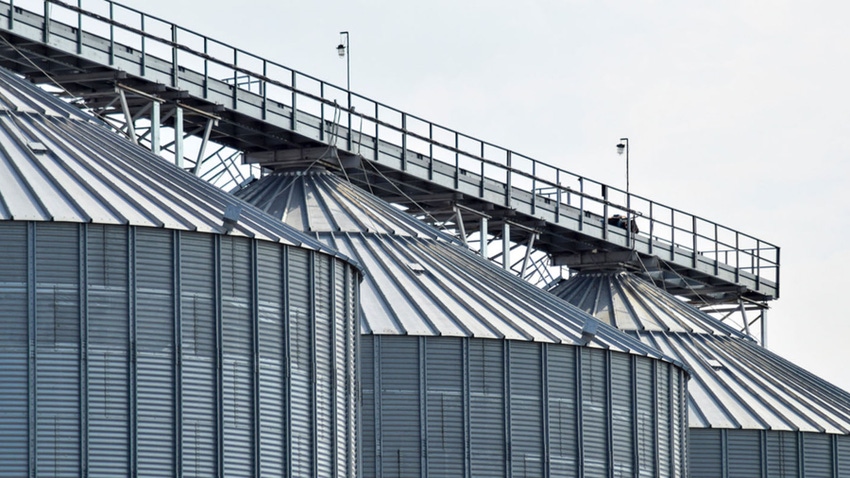
Harvest is fast approaching and will be here before we know it. You need to analyze some key marketing decisions and have a plan ready before you get busy. Every year is different, especially in farming. Let's outline some bullet points that will hopefully help you plan for various scenarios for the upcoming harvest.
Store vs. sell at harvest
This decision needs to be made every year. It will differ for every operation and might change a couple of times during harvest as well. Here are a few factors to consider:
What's my cost of money? It seems that higher borrowing rates will continue into 2024. Using an 8% borrowing rate, holding grain until April will cost you $4,000 per $100,000 borrowed. On the other hand, a 6-month CD is paying approximately 5% or more, according to Bankrate. So, having cash on hand versus not equates to a $9,000 difference per $100,000.
Market carry. One of the market's functions is to incentivize storing grain during a surplus (carry) or pushing immediate grain movement during a shortage (Inverse). After several years of an inverted market, some carry is returning. As of the market close on August 7th, the Dec/May carry is around 22 cents. Storing grain in the bin and selling for May would result in a 22-cent gain. Considering an 8% interest over approximately 5 months, you're looking at around 0.033 cents per month in interest cost for storing until May, which is nearly breakeven. Basis will play a role in encouraging storage. When deciding between storing and moving this winter, calculate these numbers to determine a good basis number for your operation and whether storage makes sense.
Storage charges. Will you store at the elevator or on-farm storage? What are the storage charges and drying costs at your local elevator? If you have bin storage, what's the cost to dry and store? Does it make sense to use discounted drying deals, sell across the scale, and re-own with call options? Could a basis contract help avoid storage charges? I've posed several questions, but my advice is to assign a cents-per-bushel value to each decision, factor in the cost of money, and stress test each decision against various market movements. Make sure to discuss these ideas with your advisor and grain buyer.
Income decisions
While we can wait until everything is out of the field and meet with our accountant in winter to make major income decisions, being proactive is beneficial. Here are some aspects to consider:
Crop insurance. Depending on yield and crop insurance levels, you may receive an indemnity payment. As of the market close on August 7th, December Futures are around ~4.95. If you believe you're at or below your APH and have 85% coverage, you'll receive a payment if December futures remain below 5.03 (85% of the average of 5.91 in February). Talk to your tax advisor, as you may be able to defer payments.
Crop insurance coverage ends October 31. Starting November 1, you'll have no floor or price protection unless you make sales or have a put option strategy. If you've delayed making sales, should you remain entirely bullish with no protection, or does eliminating downside price risk make sense?
Breakeven. This term is commonly used in our industry. Until everything is harvested and in the bin, any breakeven figure is merely a projection. However, you can still plan ahead by recognizing if you're undersold and how a 10-20% sale changes your breakeven.
2024 marketing. There's no reason you shouldn't formulate a plan for 2024, especially if you're locking in inputs in the upcoming months. Good risk management suggests that if we've taken a position in the market (via input costs), we should consider a position to mitigate the risk of lower prices.
Farming is inherently volatile. It's likely that your plan will change multiple times in the next 90-120 days. Be prepared to adapt quickly based on market conditions. Having a solid framework or plan in place now will enable you to make changes while focusing on the operational side of your business in the coming months.
Contact Advance Trading at (800) 747-9021 or go to www.advance-trading.com.
Information provided may include opinions of the author and is subject to the following disclosures:
The risk of trading futures and options can be substantial. All information, publications, and material used and distributed by Advance Trading Inc. shall be construed as a solicitation. ATI does not maintain an independent research department as defined in CFTC Regulation 1.71. Information obtained from third-party sources is believed to be reliable, but its accuracy is not guaranteed by Advance Trading Inc. Past performance is not necessarily indicative of future results.
The opinions of the author are not necessarily those of Farm Futures or Farm Progress.
About the Author(s)
You May Also Like






